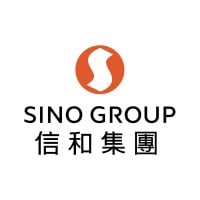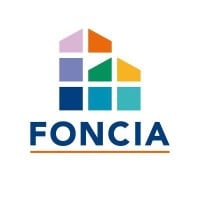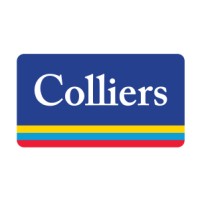Company Cyber Security Posture
NANA
NA Company Details
NA
NA
NA
NA
NA
NA
Scan still pending
NA
NA
Between 200 and 800
This score is AI-generated and less favored by cyber insurers, who prefer the TPRM score.
 NA Global Score
NA Global Score.png)

Company Scoring based on AI Models
| Model Name | Date | Description | Current Score Difference | Score |
|---|---|---|---|---|
| AVERAGE-Industry | 03-12-2025 | This score represents the average cybersecurity rating of companies already scanned within the same industry. It provides a benchmark to compare an individual company's security posture against its industry peers. | N/A | Between 200 and 800 |
Company Cyber Security News & History
| Entity | Type | Severity | Impact | Seen | Url ID | Details | View |
|---|
Company Subsidiaries

NA
Access Data Using Our API

Get company history
.png)
NA Cyber Security News
SM Prime Buys Back 1 Million Shares
SM Prime repurchased a further 1 million shares on Tuesday at between 21.85 Philippine pesos and 22.10 pesos apiece, according to a ...
SM Prime Earns Top ESG Honors at 15th Asian Excellence Awards
The 15th Asian Excellence Awards honors companies and executives across Asia who demonstrate exemplary performance in governance, business ...
How SM Group leverages AI, tech vs data theft
How SM Group leverages AI, tech vs data theft. BDO and its subsidiaries have participated in several dialogues with other players in the ...
SM Prime returns to bond market with P25-B fresh offer
MANILA, Philippines — Real estate giant SM Prime Holdings Inc. is all set to return to the debt market this month after pricing its P25-billion ...
SM Prime to open 88th mall in Laoag
PROPERTY developer SM Prime Holdings Inc. is set to open the SM City Laoag on May 30, its first mall in Ilocos Norte and the first SM mall ...
How SM Prime is building a legacy beyond malls
SM Prime Holdings, Inc. is one of the biggest integrated property developers in Southeast Asia and the largest in the Philippines. Known for its ...
DTI, SM Prime kick off business continuity training for enterprises in Rizal
A group of individuals, located in Rizal, are posing for a photo at a. A group of individuals, located in Rizal, are posing for ...
IKEA partners with mall operator SM Prime for first Philippines store
Global furniture retailer IKEA AB [IKEA.UL] will in 2020 open its first store in the Philippines located at one of the world's biggest ...
Sustainable investments for a sustainable future
The SM Group emphasized the importance of sustainable investments in fostering a greener future at a recent forum organized by the Philippine ...

NA Similar Companies

Sino Group
Established in 1971, Sino Group comprises three listed companies – Sino Land Company Limited (HKSE: 083), Tsim Sha Tsui Properties Limited (HKSE: 0247), Sino Hotels (Holdings) Limited (HKSE: 1221) – and private companies held by the Ng Family. As one of Hong Kong’s leading property developers with

Emaar
WHO WE ARE Emaar is a pioneer of master-planned communities in Dubai since its inception in 1997. It is listed on the Dubai Financial Market as a public joint-stock company. Building upon the legacy of our flagship Downtown Dubai creations — the iconic Burj Khalifa, Dubai Mall, and Dubai Fountain —

FONCIA
Notre ambition : être l’acteur de confiance des services immobiliers résidentiels. Chiffres clés : 10 000 collaborateurs et collaboratrices, 600 agences 2 500 recrutements à l’année 700 alternants et alternantes + 6 000 jours de formation + 200 écoles et universités part

City Developments Limited
City Developments Limited (CDL) is a leading global real estate company with a network spanning 163 locations in 29 countries and regions. Listed on the Singapore Exchange, the Group is one of the largest companies by market capitalisation. Its income-stable and geographically-diverse portfolio comp

Colliers
Colliers is a global diversified professional services and investment management company. Operating through three industry-leading platforms—Real Estate Services, Engineering, and Investment Management—we have a proven business model, an enterprising culture, and a unique partnership philosophy that

Forsythe Appraisals
Forsythe Appraisals is part of First American Mortgage Solutions. Established in 1940, Forsythe Appraisals is the oldest and largest staff appraisal company in the United States. With branch offices covering more than 40 metropolitan markets around the country, Forsythe Appraisals’ unique national

Frequently Asked Questions
Explore insights on cybersecurity incidents, risk posture, and Rankiteo's assessments.
NA CyberSecurity History Information
How many cyber incidents has NA faced?
Total Incidents: According to Rankiteo, NA has faced 0 incidents in the past.
What types of cybersecurity incidents have occurred at NA?
Incident Types: The types of cybersecurity incidents that have occurred include .
Additional Questions
What Do We Measure?
















Every week, Rankiteo analyzes billions of signals to give organizations a sharper, faster view of emerging risks. With deeper, more actionable intelligence at their fingertips, security teams can outpace threat actors, respond instantly to Zero-Day attacks, and dramatically shrink their risk exposure window.
These are some of the factors we use to calculate the overall score:
Identify exposed access points, detect misconfigured SSL certificates, and uncover vulnerabilities across the network infrastructure.
Gain visibility into the software components used within an organization to detect vulnerabilities, manage risk, and ensure supply chain security.
Monitor and manage all IT assets and their configurations to ensure accurate, real-time visibility across the company's technology environment.
Leverage real-time insights on active threats, malware campaigns, and emerging vulnerabilities to proactively defend against evolving cyberattacks.




